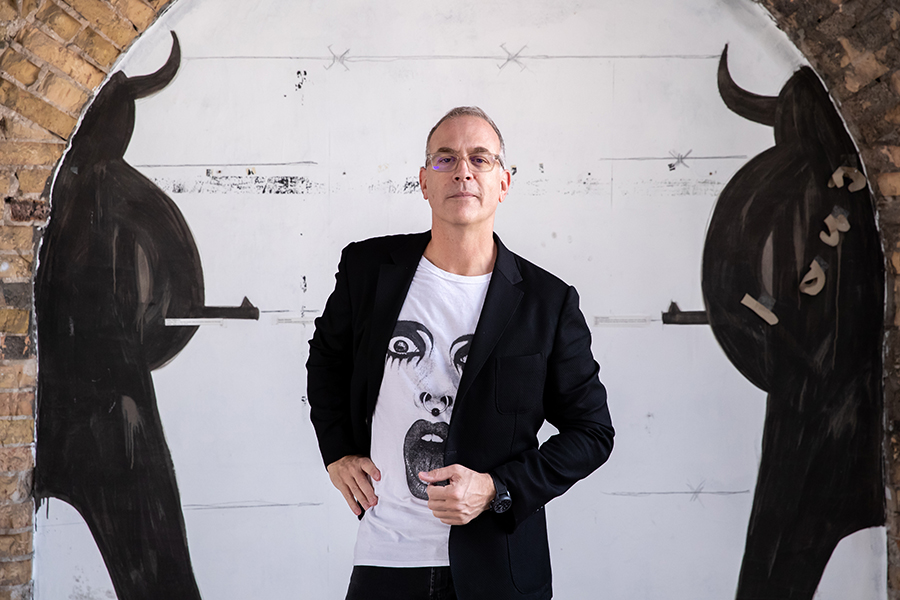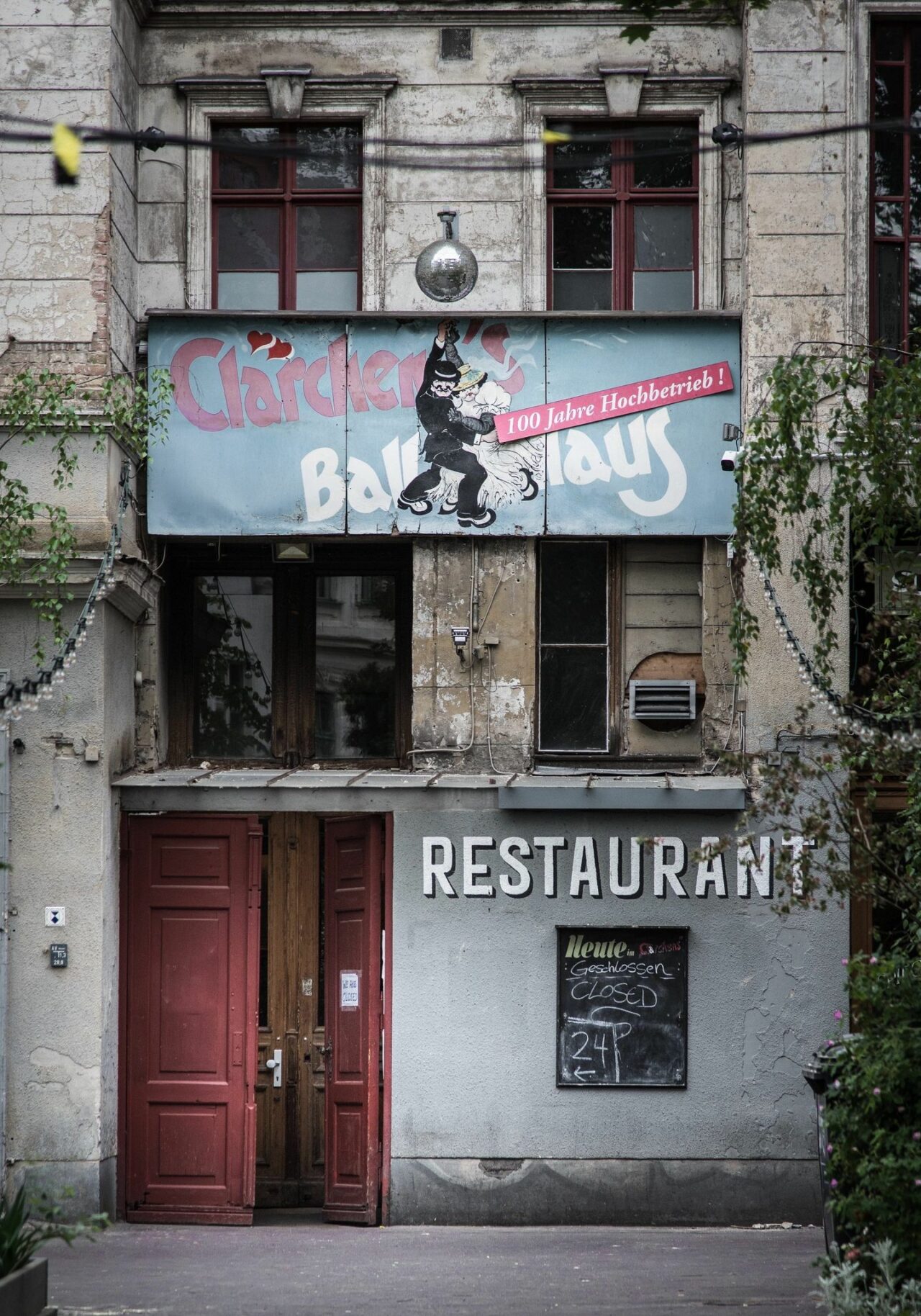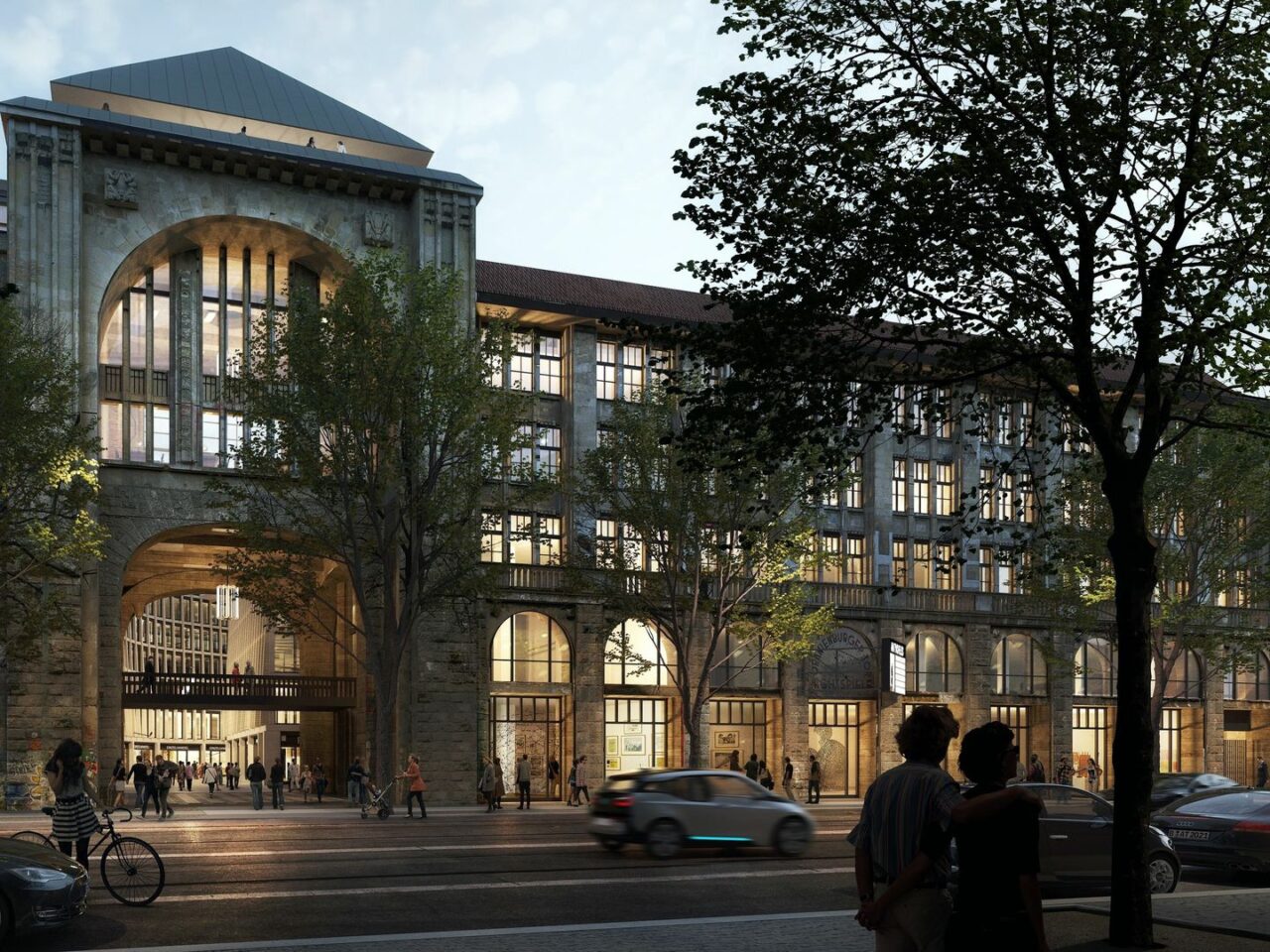Berlin is opening up again – Culture Investor Yoram Roth is ready to go

The City and the Investor: Yoram Roth and his Berlin
Yoram Roth could have invested his money in real estate, start-ups or stocks. But the Berlin cultural investor prefers to buy Clärchens Ballhaus or Tip Magazine, has a stake in the renowned club Kater Blau and Holzmarkt, and is declaring war on Netflix, Xbox and TikTok with his museum Fotografiska.
Yoram Roth has what Berlin wants: art, culture, good food and great wine.
It’s one of those days when Berlin hurts: gray and cold and windy and ugly. The third Corona wave is still rolling, most of the stores are closed, Auguststrasse in Mitte, the hotspot for gallery owners, is as if deserted. Clärchens Ballhaus is also closed, with its beer garden and dance hall normally one of the attractions here. Yoram Roth, who has just arrived from New York, is early and in a good mood. Despite Corona. Despite Lockdown. Despite the lack of prospects. “Eventually we’ll be vaccinated,” he says. “And then we’ll go out again in the evening, meet friends and show each other the pictures from back then, of life in the Corona crisis, over a glass of wine.”
Yoram Roth will very likely be one of the winners then. Because he has on offer everything that everyone craves: Art and culture, good food and good wine, dance evenings and wild club nights. A portfolio that takes as much breath to recount as his curriculum vitae: Born in Berlin. His Jewish grandfather fled the Nazis, his father returned and rose to become a successful entrepreneur in real estate. In 1991, at the age of just 23, Yoram Roth founded his first business with the techno and house label D’Vision Records. Studies in New York. Work as a photographer. Art collector. DJ. And now he’s showing an entire city that culture is not just a state subsidy business, but a worthwhile investment.

Yoram Roth’s investment with heart: Clärchens Ballhaus in Berlin Mitte
Take Clärchens Ballhaus, one of the city’s oldest surviving ballrooms, an institution with its German cuisine, dance classes and legendary Schwoof nights. It has survived two world wars, Quentin Tarantino used it as a backdrop for “Inglourious Basterds”, and when Yoram Roth bought Clärchens at the end of 2018 and did not renew the lease with the tenant, a storm of indignation broke out. 7,500 people signed an open letter warning that an end to the Clärchens in its existing form would be tantamount to “an amputation,” 25,000 more started a citizens’ petition.
It was a fairly typical Berlin reaction, the persistence reflex of a city that is subject to constant change and now amps up the rage to 100 when it just hears the word Investor. The punch line: they were all wrong. Yoram Roth had bought the Clärchens precisely because it was the way it was. “The purchase was a rescue,” he says. “There were building permits to build on the front of the property, and open a Vapiano chain restaurant in the ballroom. I didn’t want that. Not just because I love the space, but because that’s exactly how I see it as a business.”
A business he didn’t just buy, but one he’s developing, re-sharpening, perfecting. There’s no detail that he hasn’t helped plan. The gastro-pub kitchen with its meatballs, black pudding and Maultaschen is now headed by Tim Raue’s former sous chef. In the ballroom, after Corona ends, will host a daily program of readings, concerts and other events. The toilets, the electrics, the fire protection, the garden: new. Otherwise, everything is to remain as always – and that also applies to the door policy: open to all age groups, without reservations. No rich, no poor, only the QAnon fools won’t get in. He doesn’t want them here.

Big plans: Yoram Roth’s “Fotografiska” photo museum in Berlin
Yoram Roth, 53 years old, sporty, casually dressed, wants to join in the celebrations, the drinking, the going out. After all, he says, that’s the beauty of Berlin, one of the reasons why a person with common sense could only live here, and why he returned to his hometown after living in New York and L.A. for 20 years. “In New York or L.A., you have to turn in the keys to the city at age 30. When I go out there in the evening, people look at me as if I don’t belong there. We don’t have that in Berlin, especially at Clärchens.” Berlin, he says, is more open, more experimental and less expensive – and culture is a worthwhile investment. “Berlin is one of the most visited cities in Europe,” he says. “And tourists don’t come here to ski or hike. They come for the culture, the clubs, the bars, the museums, the history. And that’s also true for all those who move here.”
There can’t be enough offers, he says, which is another reason why Yoram Roth is already investing in a new project, just a few hundred meters away from Clärchens on the site of the former Kulturhaus Tacheles. Fotografiska, the fourth branch of Yoram Roth’s photography museum after Stockholm, Tallin and New York, will open here at the end of 2022. 5,500 square meters of space, four to five exhibitions at the same time and a concept that, as with the other branches, is likely to cause quite a stir in the cultural scene. It’s best illustrated by the planned opening hours: during the week until 11 p.m., on weekends until after midnight. In addition a restaurant, a Bistro and good wine, which visitors may take with them into the exhibition and workshops. “In Berlin, the City prides itself by having a long night of museums once a year. We’ll have that every night,” says Yoram Roth. “A museum that’s only open from 9 to 5 is there for tourists or retirees. Every other person has to work then.”
It’s his understanding of culture, perhaps the reason he makes money and others don’t: His culture is not just young, modern, hip. It also has a service character, is geared to the needs and lifestyles of customers. At Kater Blau, you can party from Friday night to Monday night. At Clärchens, everyone can get in. And at Fotografiska, you can drink and eat and see constantly changing exhibitions after midnight. The museum in Stockholm has 400,000 visitors a year, most of whom come in the evening. “Our competition is not other museums, our competition is Netflix, Xbox and TikTok,” says Yoram Roth. “We have such a good cultural offering at home. We need to get people off the couch again.”
That’s also why Yoram Roth is working harder than ever in his life right now. 12, 14-hour zooms, contingency plans, conferences, new projects. Not just to save and grow his business, but to be ready when a city, when an entire country, can finally do that again: get off the couch.
Translated from an Esquire Magazine profile written by Misha Heuer, and published 21.05.21
